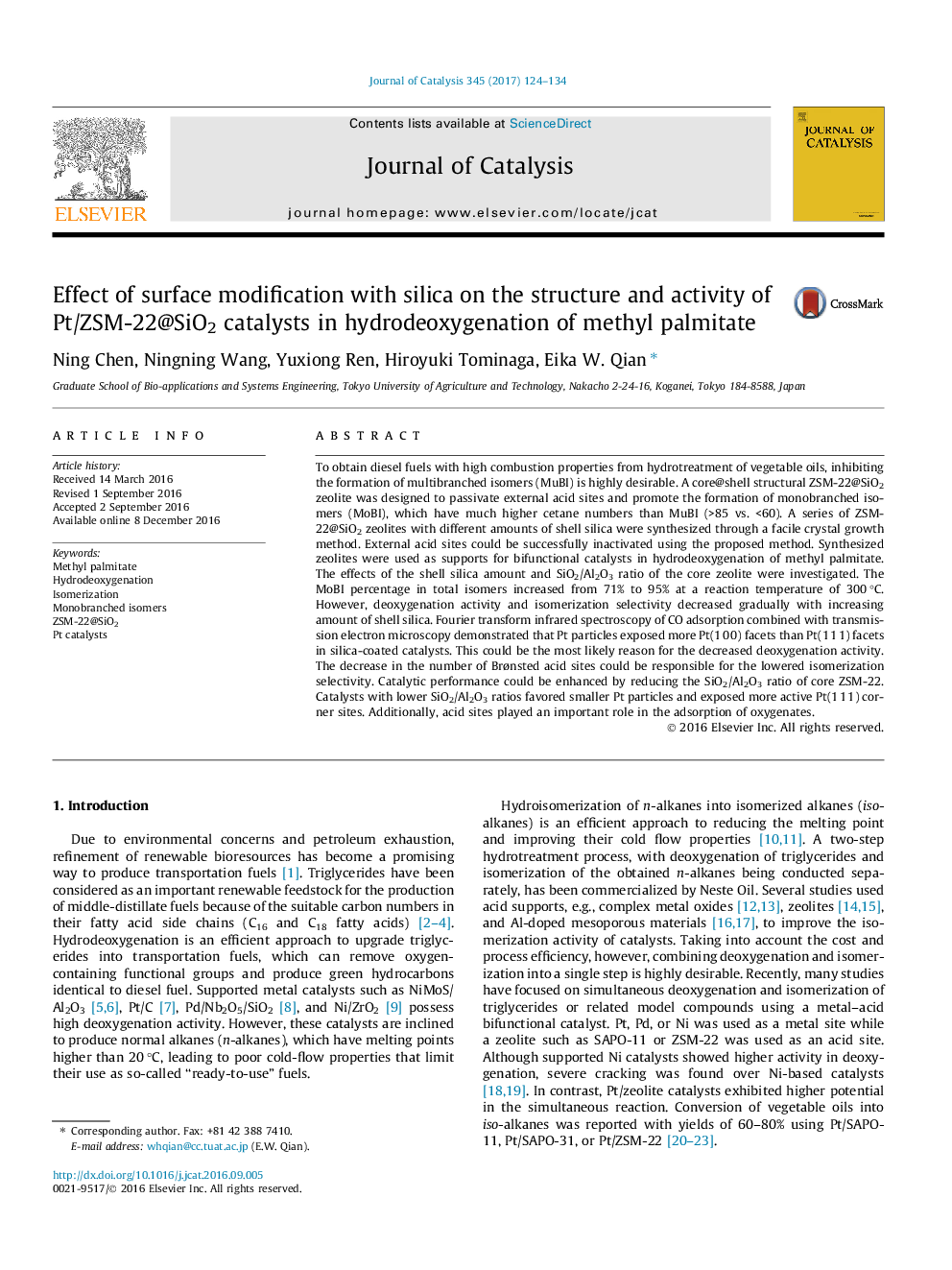| Article ID | Journal | Published Year | Pages | File Type |
|---|---|---|---|---|
| 6455641 | Journal of Catalysis | 2017 | 11 Pages |
â¢Core@shell structural ZSM-22@SiO2 was synthesized by silica coating.â¢Pt/ZSM-22@SiO2 showed high shape selectivity to monobranched alkanes.â¢Acid sites play an important role in the adsorption of oxygenates.â¢Pt particles with more Pt(1 1 1) facets possessed higher deoxygenation activity.â¢Smaller Pt particles were obtained by lowering the Si/Al ratio of zeolite.
To obtain diesel fuels with high combustion properties from hydrotreatment of vegetable oils, inhibiting the formation of multibranched isomers (MuBI) is highly desirable. A core@shell structural ZSM-22@SiO2 zeolite was designed to passivate external acid sites and promote the formation of monobranched isomers (MoBI), which have much higher cetane numbers than MuBI (>85 vs. <60). A series of ZSM-22@SiO2 zeolites with different amounts of shell silica were synthesized through a facile crystal growth method. External acid sites could be successfully inactivated using the proposed method. Synthesized zeolites were used as supports for bifunctional catalysts in hydrodeoxygenation of methyl palmitate. The effects of the shell silica amount and SiO2/Al2O3 ratio of the core zeolite were investigated. The MoBI percentage in total isomers increased from 71% to 95% at a reaction temperature of 300 °C. However, deoxygenation activity and isomerization selectivity decreased gradually with increasing amount of shell silica. Fourier transform infrared spectroscopy of CO adsorption combined with transmission electron microscopy demonstrated that Pt particles exposed more Pt(1 0 0) facets than Pt(1 1 1) facets in silica-coated catalysts. This could be the most likely reason for the decreased deoxygenation activity. The decrease in the number of Brønsted acid sites could be responsible for the lowered isomerization selectivity. Catalytic performance could be enhanced by reducing the SiO2/Al2O3 ratio of core ZSM-22. Catalysts with lower SiO2/Al2O3 ratios favored smaller Pt particles and exposed more active Pt(1 1 1) corner sites. Additionally, acid sites played an important role in the adsorption of oxygenates.
Graphical abstractDownload high-res image (199KB)Download full-size image
